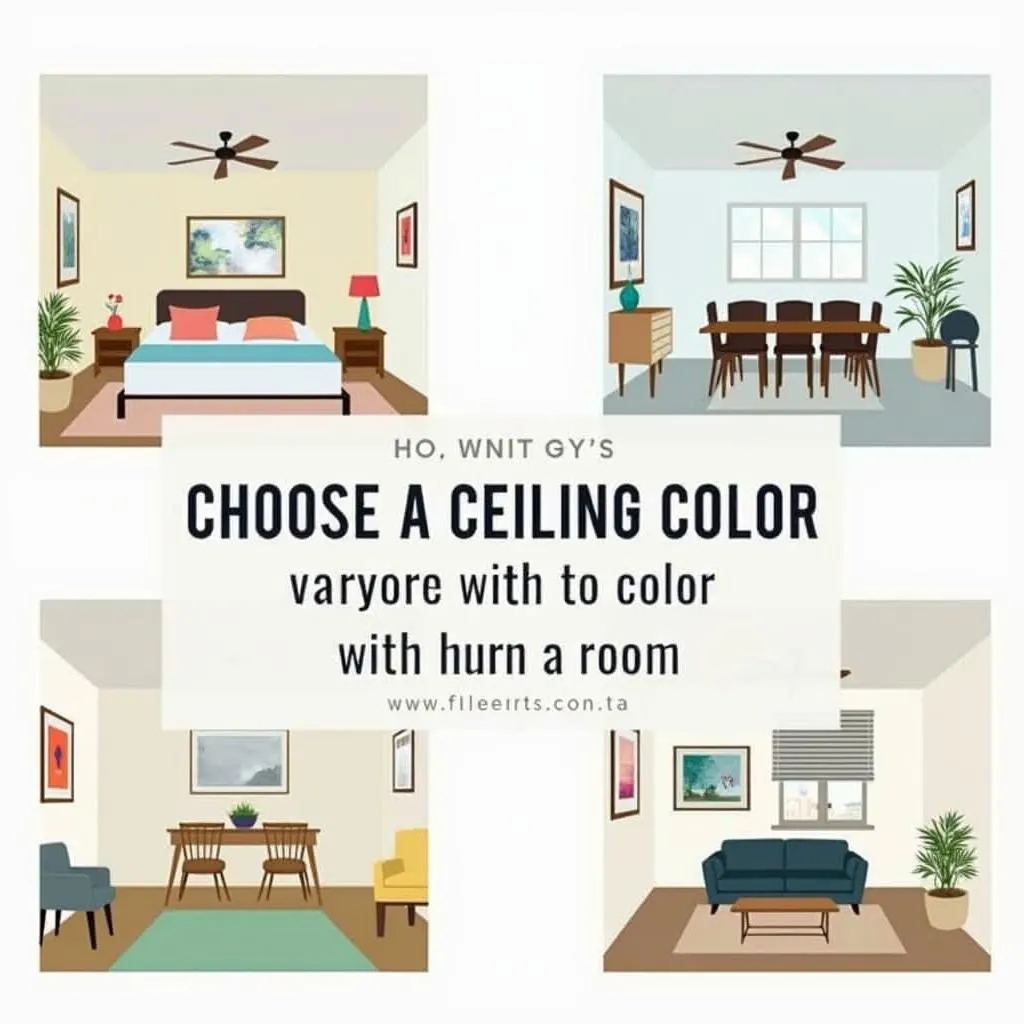Deciding on the color scheme for your home is a fun and exciting part of the decorating process. But one question often arises: should you paint your ceiling the same color as your walls? This is a common dilemma for many homeowners, as it’s a decision that can significantly impact the overall feel and appearance of a space.
In this article, we’ll delve into the pros and cons of painting your ceiling the same color as your walls, explore different design aesthetics, and help you determine what’s best for your home.
When to Paint Your Ceiling the Same Color as Your Walls
There are several situations where painting your ceiling the same color as your walls can be a great choice:
- Creating a Sense of Height: In rooms with lower ceilings, painting the ceiling the same color as the walls can help to visually expand the space and create a more airy and spacious feel.
- Enhancing Cohesion: A unified color scheme can create a sense of harmony and cohesiveness within a room, particularly if you’re using bold or contrasting colors on the walls.
- Simplifying Design: Matching the ceiling color to the walls can help to simplify the overall design aesthetic, especially in rooms where you want to highlight specific furniture pieces or architectural features.
- Minimizing Distraction: For some, having a different color on the ceiling can be distracting. Matching the colors can help to minimize visual clutter and create a more calming atmosphere.
When to Paint Your Ceiling a Different Color
While painting the ceiling the same color as your walls can be beneficial, there are also times when a contrasting color is a better option:
- Adding Visual Interest: Using a contrasting color on the ceiling can instantly add visual interest to a room, especially in spaces that are otherwise neutral or monotone.
- Defining Architectural Elements: If your room has interesting architectural features like beams or crown molding, using a contrasting color on the ceiling can help to highlight these elements and create a more defined space.
- Creating a Focal Point: A contrasting ceiling color can draw attention upwards, making the room feel taller and grander. This can also be used to create a focal point in a specific area of the room.
- Experimenting with Color: If you’re feeling bold and want to make a statement, using a contrasting ceiling color is a great way to experiment with different colors and create a unique look.
Choosing the Right Ceiling Color
If you decide to paint your ceiling a different color, there are a few things to consider:
- Complementary Colors: Complementary colors are opposite each other on the color wheel and create a high-contrast look. Think blue and orange, purple and yellow, or green and red. This choice can be dramatic and eye-catching, but it’s important to use them in moderation.
- Analogous Colors: Analogous colors are located next to each other on the color wheel and create a harmonious and soothing look. Think blue, blue-green, and green, or orange, yellow-orange, and yellow.
- Neutral Colors: Neutral colors like white, gray, and black are always a safe choice, especially if you’re unsure about using bolder colors.
Expert Insights
“When it comes to painting the ceiling, there’s no one-size-fits-all answer,” says [Expert Name], a renowned interior designer. “It ultimately depends on the overall style of your home, the size and shape of the room, and your personal preferences.”
“I recommend considering the light source in your room when choosing a ceiling color,” suggests [Expert Name], a master painter. “A darker ceiling can make a room feel smaller, while a lighter color can create a more expansive feel.”
Conclusion
Painting your ceiling the same color as your walls can create a sense of unity and cohesiveness, while choosing a contrasting color can add visual interest and highlight architectural features. The best approach depends on your personal preferences and the specific design goals for your space.
Ultimately, the decision of whether to paint your ceiling the same color as your walls is a personal one. By considering the pros and cons, experimenting with different color schemes, and getting expert advice, you can create a beautiful and functional space that reflects your unique style.
FAQ
- Q: What if I’m unsure about using a contrasting ceiling color?
- A: If you’re unsure, start by using a lighter shade of the wall color on the ceiling. This can create a subtle difference without being too dramatic.
- Q: What color should I paint my ceiling in a bedroom?
- A: For a bedroom, a light and calming color is often recommended, such as white, light gray, or pale blue.
- Q: Can I use a contrasting ceiling color in a small room?
- A: While a contrasting color can add visual interest, it can also make a small room feel even smaller. Consider using a lighter shade of the contrasting color or opting for a subtle color difference.
- Q: What should I do if my ceiling has imperfections?
- A: If your ceiling has imperfections, consider using a slightly darker color to help disguise them.
- Q: How do I choose a ceiling color that complements my furniture?
- A: Choose a ceiling color that harmonizes with the dominant color of your furniture. If your furniture is mainly neutral, you can use a bolder color on the ceiling.
 Choosing the Right Ceiling Color for Furniture
Choosing the Right Ceiling Color for Furniture
Need Professional Help?
If you’re unsure about the best approach for your home, don’t hesitate to contact us! Our team of expert color consultants is here to help you create a space that you love. We offer a range of services, from color consultations to complete painting projects.
Contact Us:
- Phone: 0373298888
- Email: [email protected]
- Address: 86 Cầu Giấy, Hà Nội
We’re committed to providing exceptional service and exceeding your expectations!